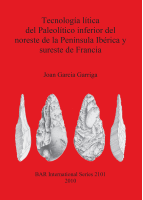Description
BOOK DESCRIPTIONThe scientific objectives of this research are to study the technological processes during the Middle and initial Upper Pleistocene in the northeastern Iberian Peninsular and southwestern France, and their implications for the behaviour of prehistoric human societies. The research studies of the lithotechnical records of archaeological sites located in different ecosystems (the Corbières Massif, the river basins of Roussillon, the river Ter terrace system, la Selva depression, and lacustrine basin of Banyoles), and their industries found in the sedimentary deposits preserved in caves (G level of the Caune de l'Arago), rock-shelters (lower levels of Mollet I), or in ancient paleosoils (Puig d'Esclats, Casa Nova d'en Feliu and Can Burgés), fluvial flood plains (Domeny Industrial), the deposits dismantled by erosional action on slopes (Costa Roja, Mas d'en Galí and Puig d'en Roca III), and in ancient fossil fluvial terraces/open-air sites (Mas Ferréol, Plane d'en Bourgat and Butte du Four-Llabanère). The results of the lithotechnical analyses allow for the documentation of the differentiated adaptive patterns of mesopleistocene hominids, reflected in the industries' level of technological variability between the geographical areas. The data obtained is assessed within three parameters: the areas where the necessary raw materials for knapping were obtained; the study of the technical production systems characteristic of each regional unit; and the diachronic interval of these settlements obtained both by relative chronology as well as through the application of absolute dating techniques.











